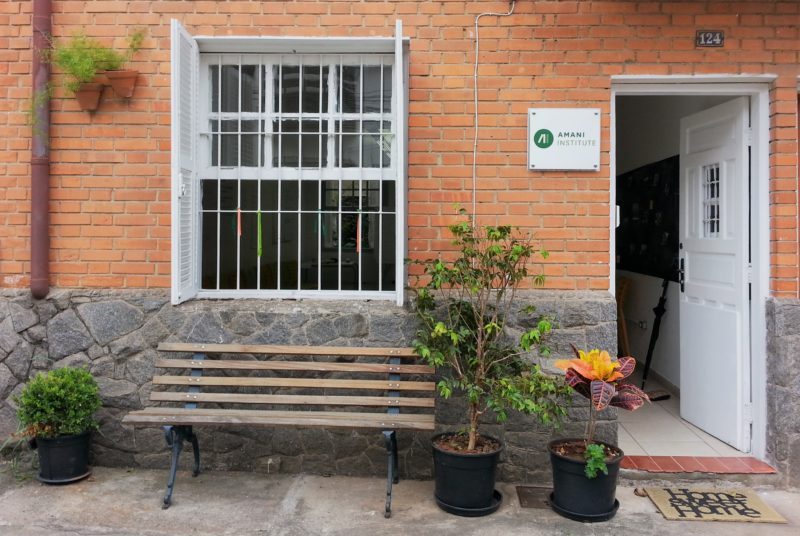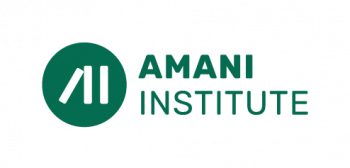How might we create a safe space for better, innovative, and mutual learning process?
This is a guest post by our Alumni Amani Al-Nsairat, Jordan.
It was the 2nd of August 2016, and it was also our second meeting after the welcoming dinner. The fellows started to arrive as the session was due to start at 6pm. The atmosphere was full of warm welcomes, hugs, and smiles. It was the first time I saw the Amani house from the inside; the home where we would all spend four months learning and interacting with each other. It’s a simple place, but with a splash of colour that reflects the beauty of each Brazilian house I’ve visited during my journey.
Four months later I find myself trying to go back in time to picture the whole journey. I want to understand what made this experience such a safe and novel space compared to other educational or professional experiences I’ve gone through. Certainly, it is the result of a several reasons; I would like to summarize some of them.
In the first session of the Immersion Phase – intro to the Amani program – we discussed a number of important elements; general structure, expectations, group norms, and learning styles. The most interesting part of this session was the different learning styles we examined, as well as defining our own learning style. Being introduced to that aspect might sound quite normal in most educational environments, however, emphasizing the benefits of being conscious about it during the interactive learning journey was particularly significant. This part of the session was very important when trying to understand the different learning styles of each fellow, knowing how to interact accordingly, as well as assisting in the creation of a safe space.
I was introduced to the ‘safe space’ concept during a previous work experience, nevertheless, the actual experiment of that space came through the four months of practical studying of the Social Innovation Management Program at Amani Institute in Sao Paulo, Brazil. The many ideas, thoughts, insights, inquiries, comments and even jokes were welcomed and willing to be heard in Amani’s safe space. It’s hard to create this kind of environment unless you have solid facilitation skills, high level of capacities and consciousness of Amani team and lecturers to smoothly transfer the knowledge to fellows. Everyone comes in with a shared intention of working towards a common goal tackling the world’s toughest problems and creating social change.
 Amani’s safe space goes beyond the following definition: “a place or environment in which a person or category of people can feel confident that they will not be exposed to discrimination, criticism, harassment, or any other emotional or physical harm“. It means feeling uncomfortable at times yet “safe”; facing struggles with who you are and your beliefs; showing vulnerability without fear of judgment; getting to know yourself as well as other fellows better; and demonstrating an authentic caring and honest attitude towards one another.
Amani’s safe space goes beyond the following definition: “a place or environment in which a person or category of people can feel confident that they will not be exposed to discrimination, criticism, harassment, or any other emotional or physical harm“. It means feeling uncomfortable at times yet “safe”; facing struggles with who you are and your beliefs; showing vulnerability without fear of judgment; getting to know yourself as well as other fellows better; and demonstrating an authentic caring and honest attitude towards one another.
“They create a space free of judgment, and people that are involved in it (fellows and coaches, etc.) try and are much less judging than in most of the places in our society. This creates a safe environment and an opportunity to create an ecosystem based on possibilities and diversity of points of view, not critics.” Ina Bogdanova, Amani fellow from Bulgaria
One pillar of the program that encouraged the safe space was the Inner Journey of the Changemaker – a self-discovery journey which aims to create an alignment between the changemaker’s personal life, their potential, and the change they want to achieve in order to effectively communicate with others. Several topics, concepts, activities, open discussions, continuous reflections, and journaling ensured the Inner Journey was a very deep process, to the point that we shared things that we preferred to hide or were not able to discuss before. Nikole Zamudio, Amani fellow from Colombia noted:
“I do consider that the inner journey is a key part of the program, that helps to make Amani a safe space. In this space, you are constantly pushed to be outside of your comfort zone. During your inner journey, you discover lots of feelings, valuable situations, and failures, that you may have pushed behind because you were not able or willing to recognize them.”

Amani Fellows – Brazil Class 3, Guaecá Beach in São Sebastião
Another key element of creating the safe space is building trust and cooperation. It didn’t take us a long time to build that as we were supporting each other throughout this journey, and we were reminded from time to time, including through indirect approaches, about the importance of sharing and exchanging ideas on a basis of mutual benefit. Ultimately, everyone was dedicated to making sure that we all fully benefitted from the experience.
We all came together with the same goal which made the process of supporting and working together in an innovative environment is easy. The small group tasks were one of the techniques that helped foster collaboration and build trust; each fellow genuinely contributed and provided their thoughts to other fellows’ projects.
Ina described the safe space as follows: “The safe space in Amani is when the ego is silent, your survival instinct is not present, and we focus on how can we collaborate, contribute and support each other.“
With that said, a safe space doesn’t mean a protective bubble where everything is good, and there’s no area to disagree. On the contrary, we had times where we shared different points of view and disagreed, but at the same time, there was also authentic dialogue, active listening, and empathy, all of which helped in being heard or finding common ground or solution for the disagreement.
There were times of doubt and the feeling of being lost, but the approachable relationship with Amani team and the mentoring support they provided was useful – that’s why we kept using the reminder “trust the process” during September whenever any fellow had a doubt about this journey.
Certainly, one of the conditions to create an educational environment or workplace for innovation where everyone is able to unlock their potential is to have a safe space. We always hear the phrase “think out of the box” in educational institutions or workspaces, however, if there’s no safe space that guarantees this then you can’t ensure that everyone has an equal chance to give the best or ‘think differently’. In contrast, not having a safe space kills creativity, promote a competitive environment, and reverts to archaic ways of thinking or practice, thus not achieving a high quality of outcomes.
Creating and maintaining a safe space is not simple; it’s far from easy to create change, but it’s still possible. It’s a long process of examining, building trust and cooperation between all the ones who are involved, and believing in what you want to achieve. However, if you want to get the best out of any experience and make sure that everyone is benefiting – whether it’s educational or professional experiments – you should create a safe space for both your team members and you as a leader.
When I asked Ilaina Rabbat, Co-Founder & Executive Director of Amani Institute, what makes Amani a safe space, she said: “the shared values and that we trust each other. We know we all want to best of each other“. I also asked her how the institute ensures that this space exists throughout the journey – she replied: “it is a shared effort! The Amani Team, the instructors, and especially the fellows! I think that a very safe space is already created on the first trip (during Bio-Empathy) and that really sets the foundation to have that safe space across the program.”
The safe space will help in understanding the different needs and motivations, driving the members to take risks, innovate, and lose the fear of failing. To that end, you will improve the quality of the mutual learning process, achieving your shared outcomes, impacts, and the ultimate goal of attaining the change that you seek in the world.
If you want to learn more about the Post-Graduate Certificate Program in Social Innovation Management, please click here.




 Amani’s safe space goes beyond the following definition: “a place or environment in which a person or category of people can feel confident that they will not be exposed to discrimination, criticism, harassment, or any other emotional or physical harm“. It means feeling uncomfortable at times yet “safe”; facing struggles with who you are and your beliefs; showing vulnerability without fear of judgment; getting to know yourself as well as other fellows better; and demonstrating an authentic caring and honest attitude towards one another.
Amani’s safe space goes beyond the following definition: “a place or environment in which a person or category of people can feel confident that they will not be exposed to discrimination, criticism, harassment, or any other emotional or physical harm“. It means feeling uncomfortable at times yet “safe”; facing struggles with who you are and your beliefs; showing vulnerability without fear of judgment; getting to know yourself as well as other fellows better; and demonstrating an authentic caring and honest attitude towards one another.

